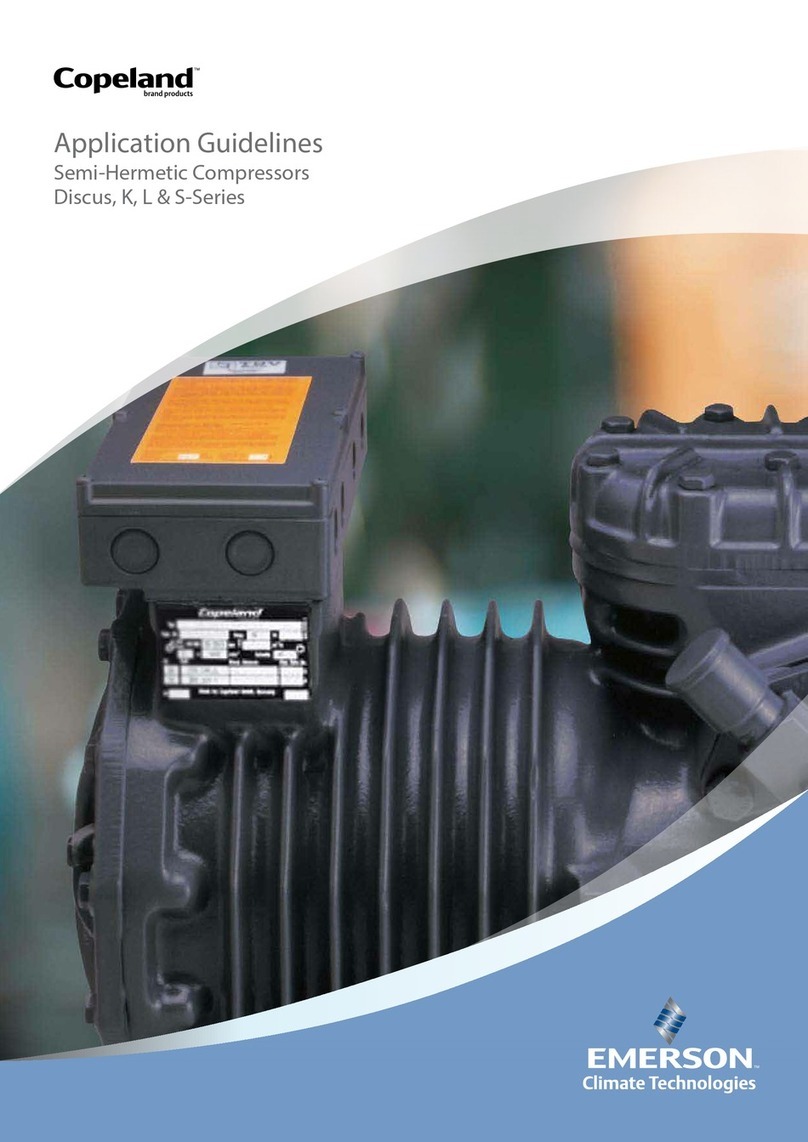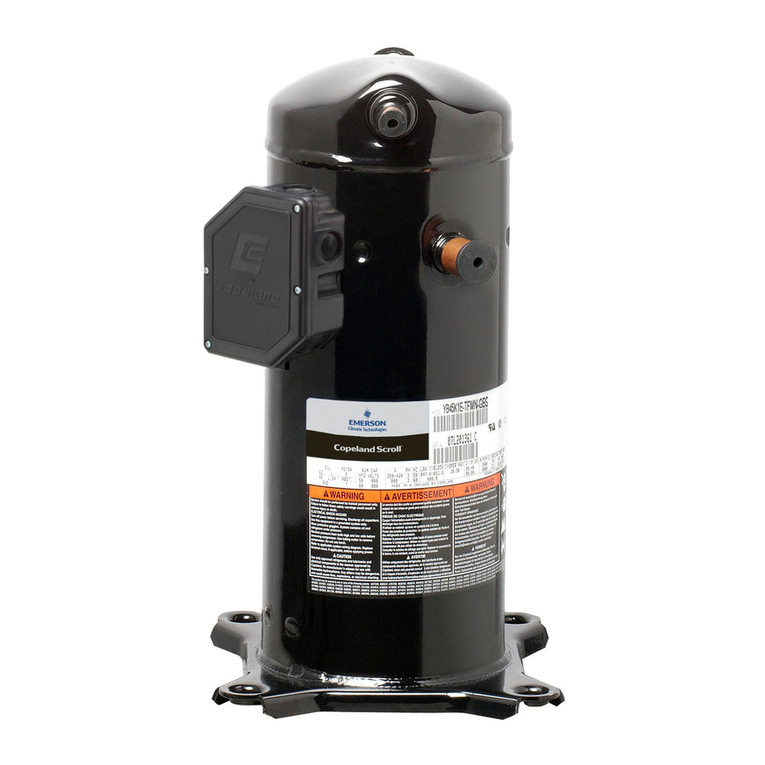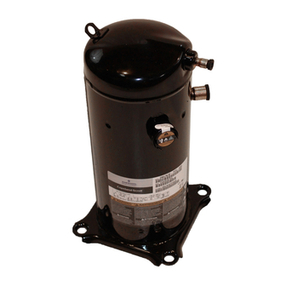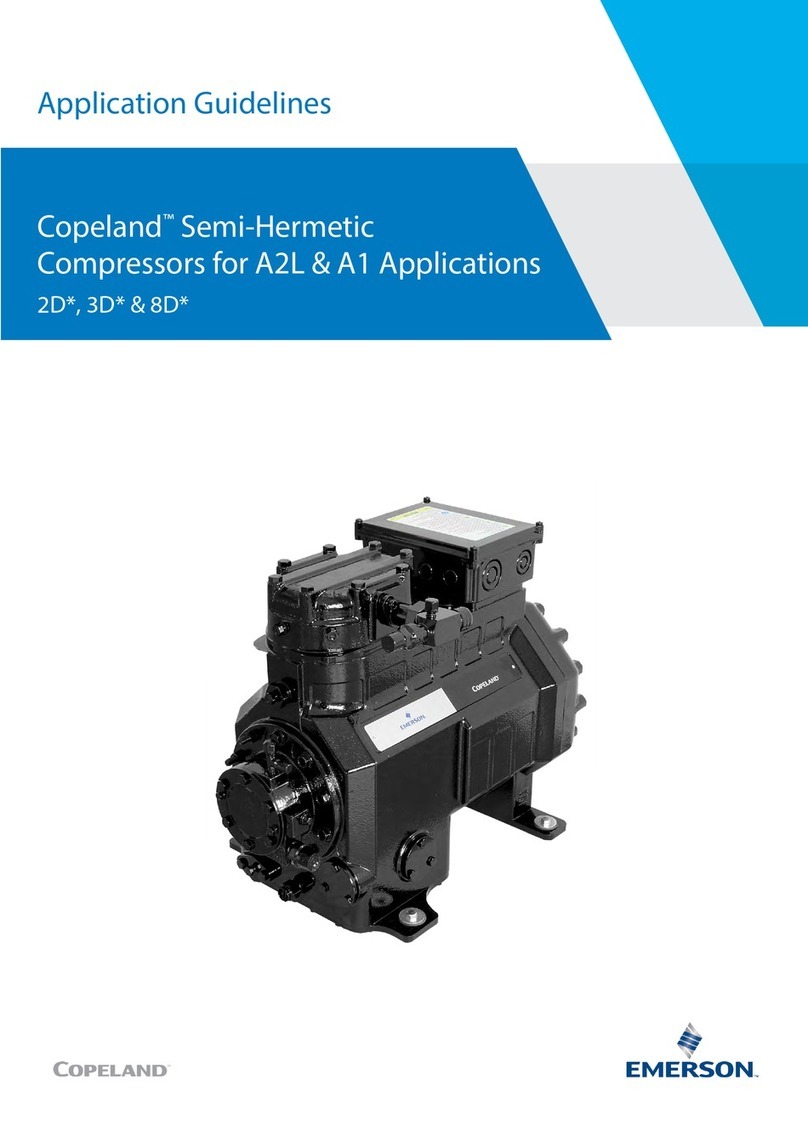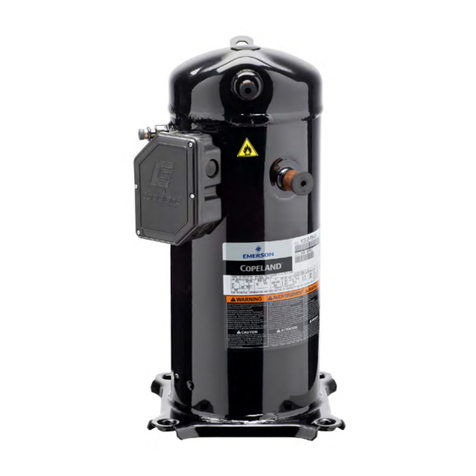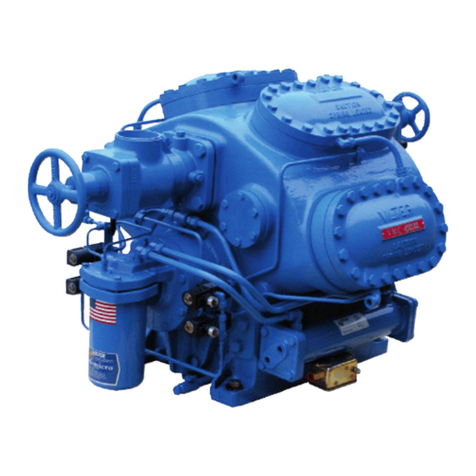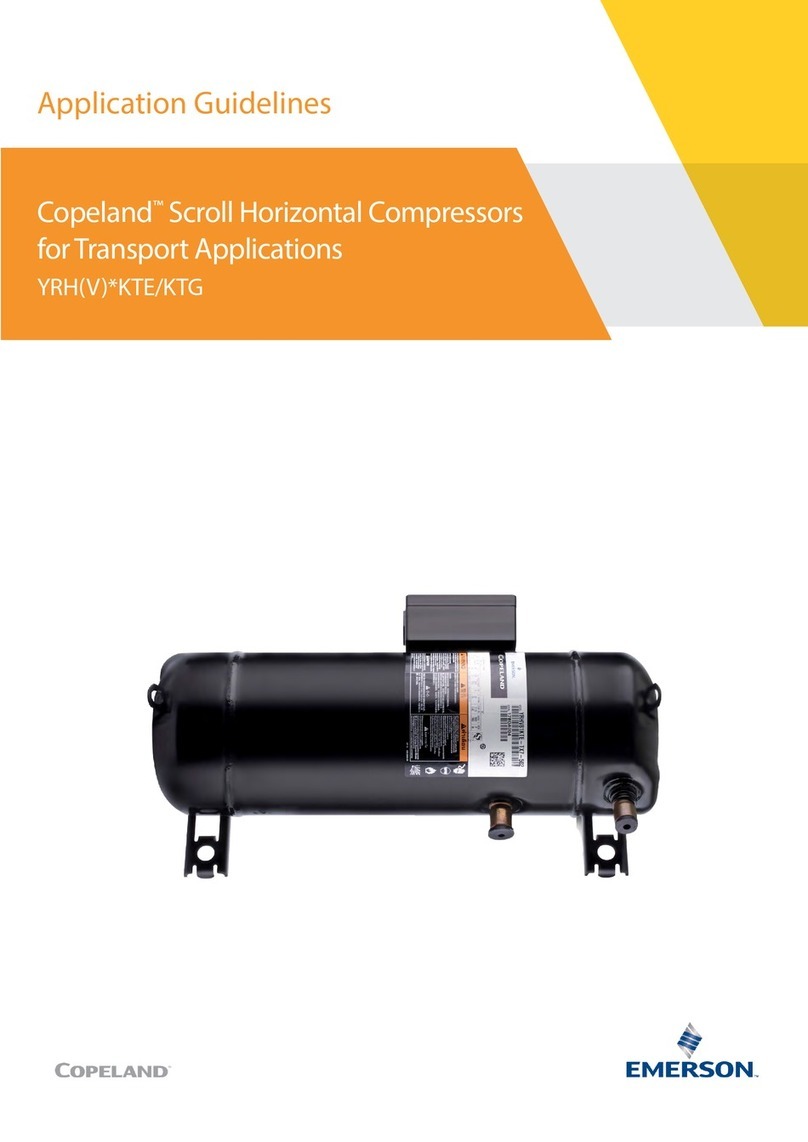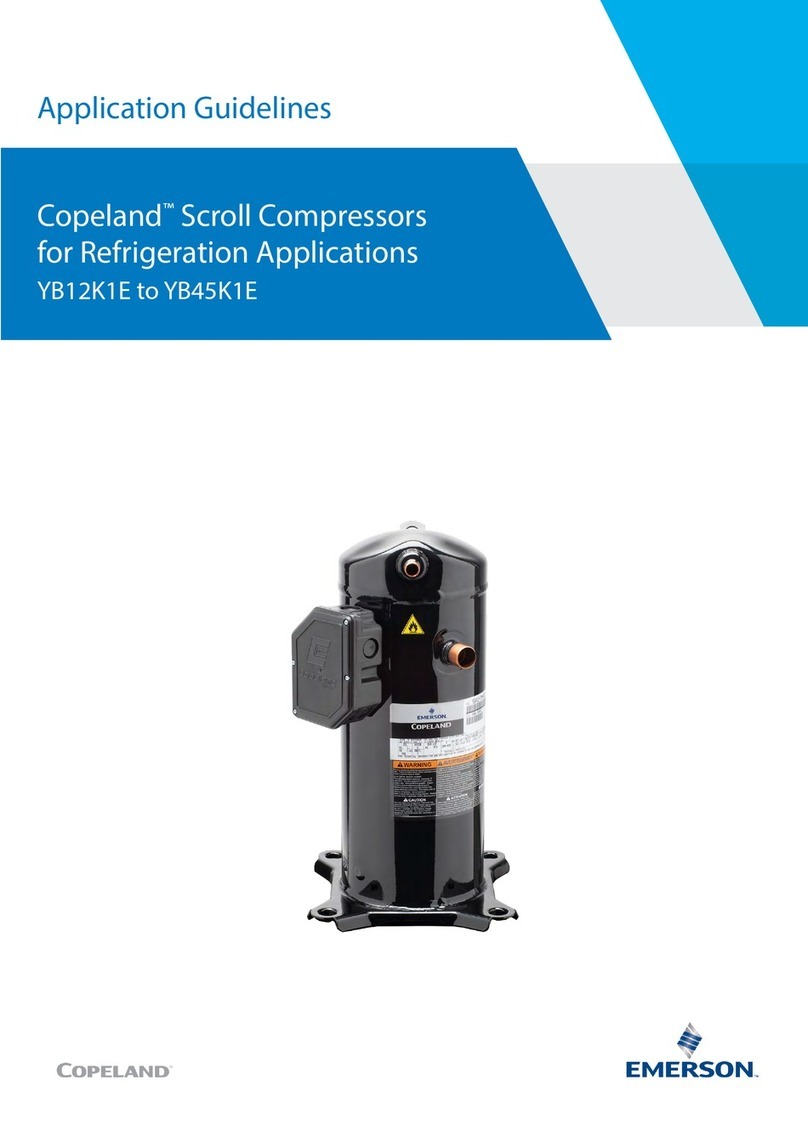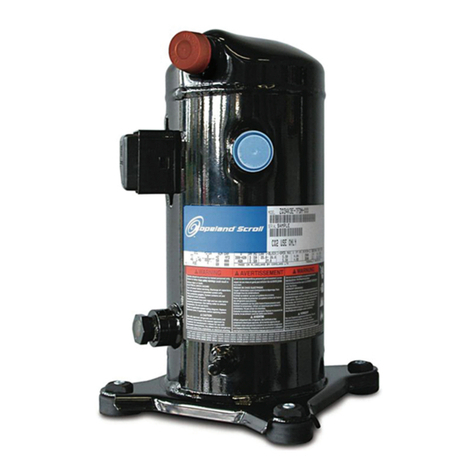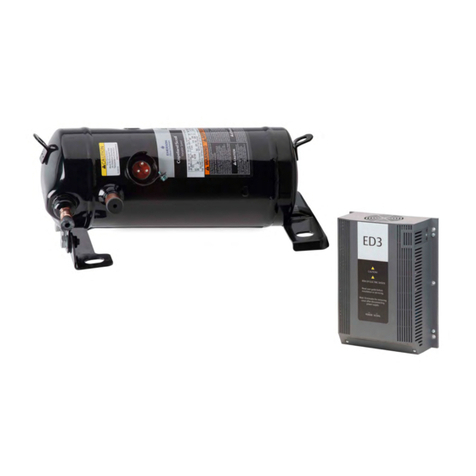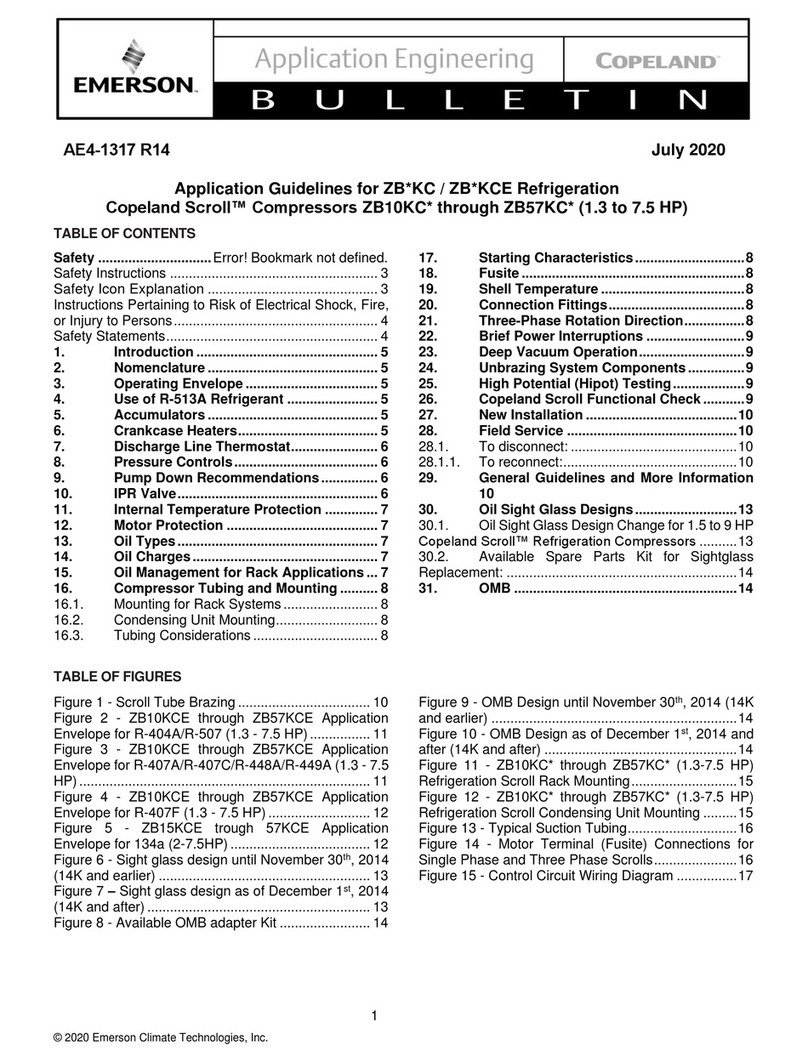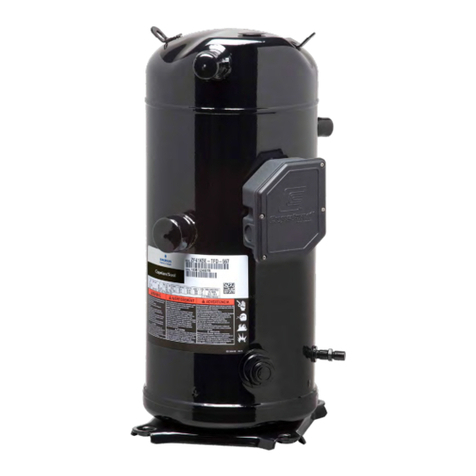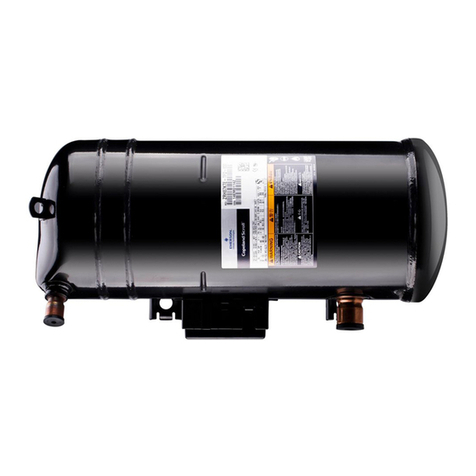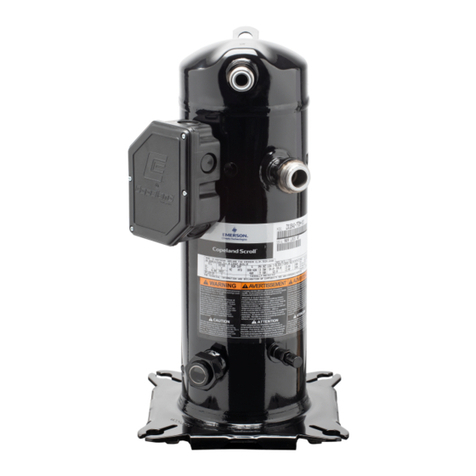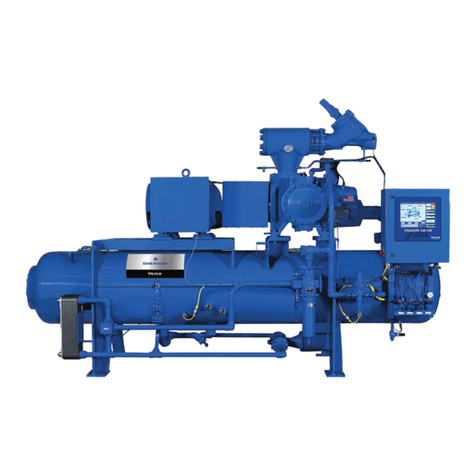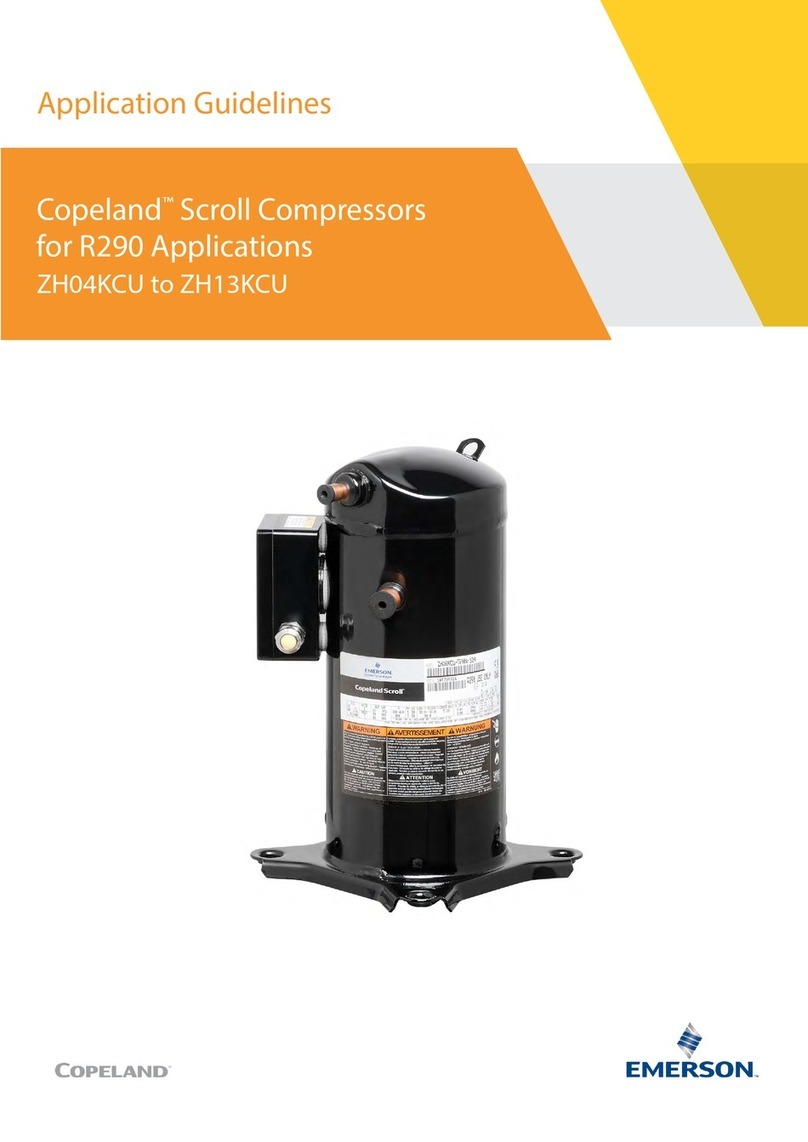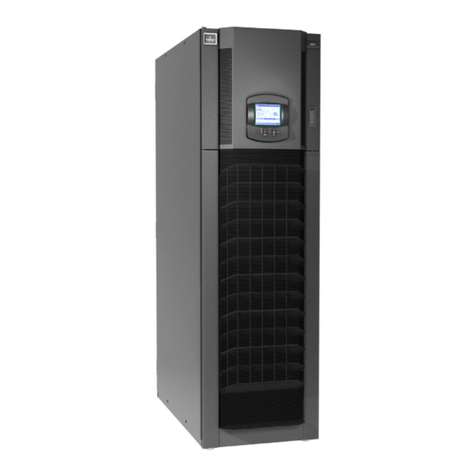
ii HPLD Single Screw Compressor • Installation, Operation and Service Manual • Emerson • 35391HP
Third Party Motors & Starters: Motors and starters or Motor & Starter Parts purchased by Seller from a third party
for resale to Buyer or for incorporation into Seller’s Product will carry only the warranty extended by the original
manufacturer (“OEM”). Motor manufacturer warranties cover only the repair or replacement of the motor, and do not
cover removal and installation charges, incidental charges associated with the removal and installation process, loss
of product, or shipping to and from the manufacturer or approved shop. The individual motor manufacturer warranty
terms can be found on the manufacturer’s associated websites.
Other limitations: Seller will not be liable under the above warranty if Buyer is in default of its payment obligations
to Seller under any purchase order or credit agreement. Except with Seller’s written permission given after receipt of
Buyer’s request within 60 days of an event, Seller will not be responsible for costs of dismantling, lost refrigerant, reas-
sembling, repair labor and expenses, travel cost or transporting the Product. Products repaired or replaced under this
warranty will be warranted for the unexpired portion of the warranty applying to the original Products. Buyer agrees
that all instructions and warnings supplied by Seller will be passed on to those persons who use the Products. Products
are to be used in their recommended applications and all warning labels adhered to the Products by Seller must be left
intact. Any technical advice furnished by Seller before or after delivery in regard to the use, application or suitability of
the Products may not be construed as an express warranty unless conrmed by Seller in writing, and Seller assumes
no obligation or liability for the advice given or results obtained—all advice given and accepted at Buyer’s sole risk.
Exclusive Remedy: Within (10) ten days after Buyer’s discovery of any warranty defects within the warranty period,
Buyer will notify Seller of such defect in writing. Seller will, at its option and as Buyer’s exclusive remedy, repair, correct,
or replace F.O.B. point of manufacture, or issue credit or refund the purchase price for, that portion of the Products
found by Seller to be defective. Failure by Buyer to give such written notice within the applicable time period will be
deemed an absolute and unconditional waiver of Buyer’s claim for such defects. Buyer assumes all other responsibility
for any loss, damage, or injury to persons or property arising out of, connected with, or resulting from the use of the
Products, either alone or in combination with other products/components. If so required, Products or parts for which
a warranty claim is made are to be returned transportation prepaid to Seller’s factory. THE FOREGOING CONSTITUTES
THE SOLE AND EXCLUSIVE REMEDY FOR BREACH OF ANY WARRANTY HEREUNDER.
SOLE WARRANTY: THE WARRANTIES ABOVE CONSTITUTE SELLER’S SOLE AND EXCLUSIVE WARRANTIES WITH
RESPECT TO THE PRODUCTS AND ARE IN LIEU OF AND EXCLUDE ALL OTHER WARRANTIES, EXPRESS OR IMPLIED,
ARISING BY OPERATION OF LAW OR OTHERWISE, INCLUDING MERCHANTABILITY AND FITNESS FOR A PARTICULAR
PURPOSE WHETHER OR NOT THE PURPOSE OR USE HAS BEEN DISCLOSED TO SELLER IN SPECIFICATIONS,
DRAWINGS OR OTHERWISE, AND WHETHER OR NOT SELLER’S PRODUCTS ARE SPECIFICALLY DESIGNED AND/OR
MANUFACTURED BY SELLER FOR BUYER’S USE OR PURPOSE.
LIMITATION OF LIABILITY: SELLER SHALL NOT BE LIABLE FOR DAMAGES CAUSED BY DELAY IN PERFORMANCE AND
THE REMEDIES OF BUYER HEREIN ARE EXCLUSIVE. IN NO EVENT, REGARDLESS OF THE FORM OF THE CLAIM OR
CAUSE OF ACTION (WHETHER BASED IN CONTRACT, INFRINGEMENT, NEGLIGENCE, STRICT LIABILITY, OTHER TORT
OR OTHERWISE) SHALL SELLER’S LIABILITY TO BUYER AND/OR ITS CUSTOMERS EXCEED THE PRICE PAID BY BUYER
FOR THE SPECIFIC PRODUCTS OR PORTION OF THE PRODUCTS PROVIDED BY SELLER GIVING RISE TO THE CLAIM OR
CAUSE OF ACTION, AND BUYER SHALL INDEMNIFY AND HOLD HARMLESS SELLER FOR ANY DAMAGES INCURRED
BY SELLER IN EXCESS THEREOF. BUYER AGREES THAT IN NO EVENT SHALL SELLER’S LIABILITY TO BUYER AND/OR ITS
CUSTOMERS EXTEND TO INCLUDE INCIDENTAL, CONSEQUENTIAL OR PUNITIVE DAMAGES. The term “consequential
damages” includes loss of anticipated prots, business interruption, loss of use, revenue, reputation and data, costs in-
curred, including for capital, fuel, power and loss or damage to capital or equipment. Buyer agrees that all instructions
and warnings supplied by Seller will be passed on to those persons who use the Products. Seller’s Products are to be
used in their recommended applications and all warning labels adhered to the Products by Seller are to be left intact.
Standard VILTER™ Warranty Statement
